Coronavirus: Perth cluster spreads to New Zealand
Two people who flew into New Zealand from Perth have been forced into self-isolation after they were declared “casual contacts” of WA’s COVID cluster.
World
Don't miss out on the headlines from World. Followed categories will be added to My News.
West Australia’s COVID cluster has reached New Zealand with two travellers from the same household forced into isolation.
One thousand passengers who arrived in New Zealand on direct flights from Perth on 19, 21 and 23 April were being contacted and provided with advice.
New Zealand’s Ministry of Health said of those, two people were told to self-isolate, after being identified as casual contacts of the Perth Mercure Hotel cluster.
“Two people from the same household have let health authorities know they were in the Perth domestic terminal at the time specified in the locations of interest page,” the ministry said in a statement on Sunday.
“They are being treated as casual contacts and have both had their tests today, with results due this week. The risk to the public has been assessed again to be very low. They remain in isolation until their test results come back.”
So far two people have tested positive to COVID-19 via community transmission in Western Australia, after a Victorian man that left Perth hotel quarantine was diagnosed with the virus.
A friend of the man, who he stayed with while in Perth, also returned a positive COVID test result on Friday.
The next day, a man in his 40s who visited a restaurant attended by the Victorian man and the woman — became the second known case of community transmission.
The couple were quarantining after travelling to COVID-ravaged India for a wedding. Contact tracers have identified 359 close and casual contacts of confirmed cases.
DEADLY BLAZE AT COVID HOSPITAL
More than 80 people died on Sunday, local time, in a fire that ripped through an Iraqi COVID-19 hospital, sparking anger and prompting the suspension of top officials in a country with long-dilapidated health infrastructure.
Many of the victims were on respirators and were suffocated or burned in the smoke and flames when the blaze, at eastern Baghdad’s Ibn al-Khatib hospital, started with an explosion caused by “a fault in the storage of oxygen cylinders”, medical sources said.
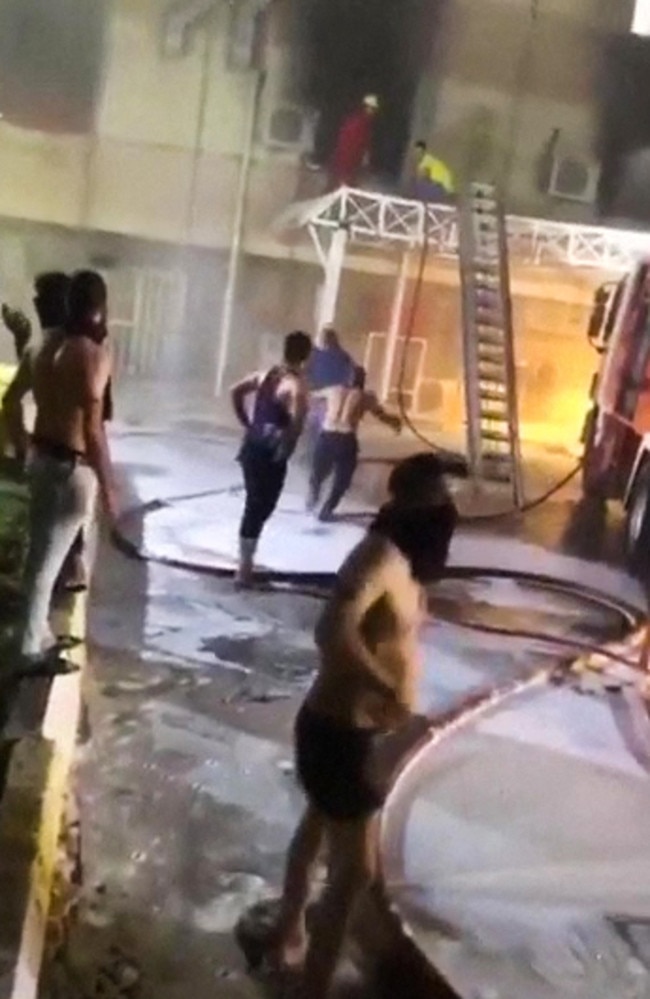
The health ministry said 82 people were killed and 110 wounded, while the Iraqi Human Rights Commission said 28 of the victims were patients who had to be taken off ventilators to escape the flames.
The blaze spread quickly across multiple floors in the middle of the night, as dozens of relatives were at the bedsides of the 30 patients in the hospital’s intensive care unit where the most severe COVID-19 cases are treated, a medical source said.
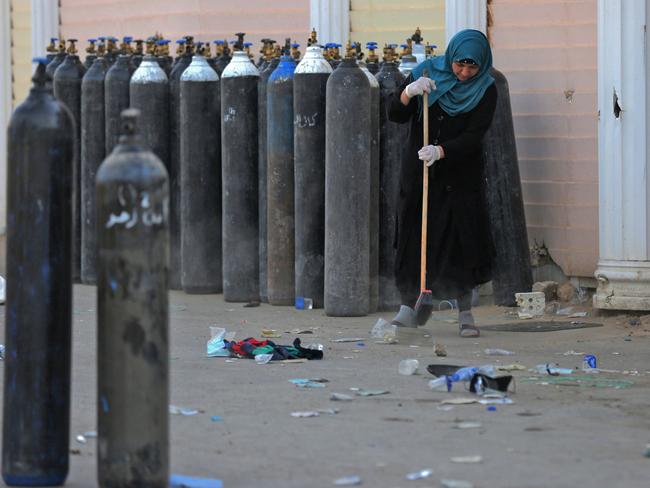
Bakr Qazem, son of one the victims, said he was at the hospital when he felt “a strong explosion”.
“We saw a fire and were not able to save the patients,” he told AFP, tears in his eyes, from Najaf, south of Baghdad, where he had taken his father’s body for burial on Sunday.
Throughout the day, funeral processions for the victims filled the holy shrine city, where the vast majority of Iraq’s Shiites are buried.

According to Iraq’s civil defence services, “the hospital had no fire protection system and false ceilings allowed the flames to spread to highly flammable products.” It added there had been a delay in firefighters reaching the hospital, located in the remote, agricultural outskirts of Baghdad.
The fire triggered outrage on social media, with a hashtag demanding the health minister be sacked trending on Twitter.
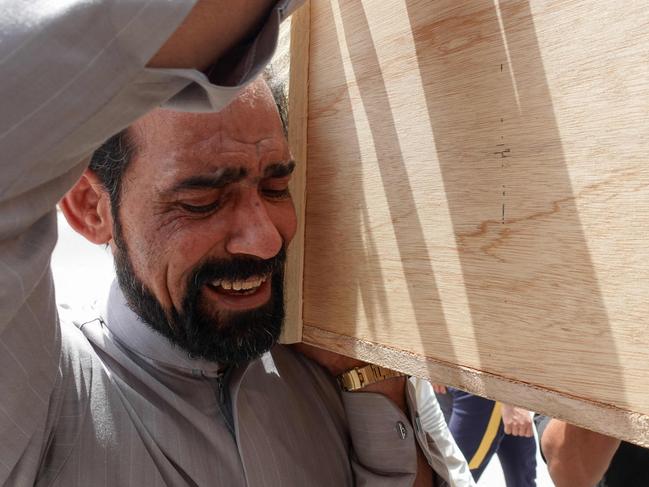
Iraqi Prime Minister Mustafa al-Kadhemi suspended Health Minister Hassan al-Tamimi and
declared three days of national mourning, while parliament said it would devote its Monday session to the tragedy.
Witnesses said the evacuation of the hospital was slow and chaotic, with patients and their relatives crammed into stairwells as they scrambled for exits.
Residents from the surrounding area rushed to the scene to help. “It was the people (civilians) who got the wounded out,” Amir, 35, told AFP, saying he saved his hospitalised brothers “by the skin of his teeth”.

Iraq’s hospitals have been worn down by decades of conflict and poor investment, with shortages of medicines and hospital beds.
But many also said negligence and endemic corruption were to blame for the deadly inferno.
“The tragedy at Ibn al-Khatib is the result of years of erosion of state institutions by corruption and mismanagement,” President Barham Saleh tweeted.
The Iraqi Human Rights Commission denounced a “crime against patients exhausted by COVID-19 who put their lives in the hands of the health ministry and its institutions.” “Instead of being treated, (they) perished in flames,” it added.

Witnesses and doctors told AFP many bodies had yet to be identified, the remains too charred by the intense flames.
One of the victims, Ali Ibrahim, 52, had been treated for coronavirus at the Ibn al-Khatib hospital and was buried by his family on Sunday at Zaafaraniya, a neighbourhood near the hospital.
“He had spent 12 days in hospital and was due to be discharged on Saturday evening after recovering. He was just waiting for the result of the last COVID-19 test,” one of his relatives told AFP.
The UN’s top representative in Iraq, Jeanine Hennis-Plasschaert, expressed “shock” at the tragedy and called “for stronger protection measures to ensure that such a disaster cannot reoccur”.
Pope Francis, who paid a historic visit to Iraq in early March, called for “prayers” for all the victims of the fire.
On Wednesday, the number of detected COVID-19 cases in Iraq surpassed one million, the highest of any Arab state.
COVID CASES WORLDWIDE HIT DAILY RECORD
A daily record of more than 893,000 COVID-19 cases has been recorded worldwide, mainly due to a surge of the virus in India, according to an AFP count on Saturday.
The previous daily high was 819,000 cases on January 8.
More than a third of the infections occurred in India, which announced 332,730 new cases on Friday and another 346,786 on Saturday, also a record for a single country since the start of the pandemic.
Over the course of a week, more than 5.5 million cases were recorded worldwide, including almost two million in India.
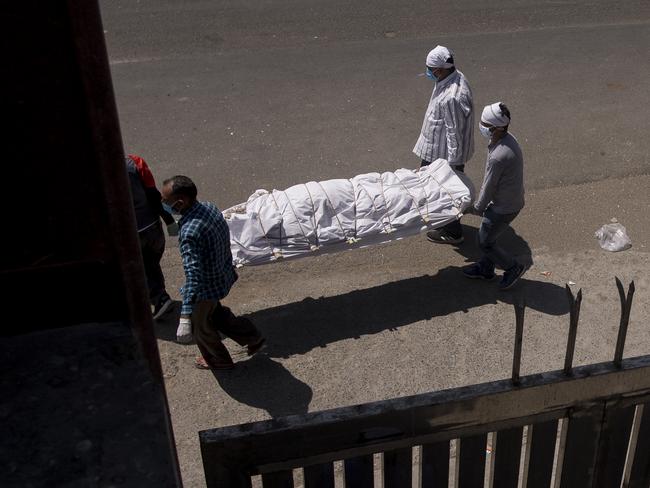
Other countries trailing India with the most new infections are the United States (490,000 cases in one week), Brazil (459,000) and Turkey (404,000).
The threshold of 150 million cases worldwide is expected to be reached next week.
Six months since the first vaccination was administered in England, nearly one billion COVID jabs — both first and second shots — have been given globally, according to AFP’s database.
The unprecedented inoculation drive is seen as the world’s ticket out of the coronavirus disaster, despite concerns about rare side effects, worries over supply, and a glaring inequality between rich and poor.
But with new COVID variants sparking a worrying fresh spike of cases and uncertainty over the vaccines’ effectiveness against them, the planet is now racing to inoculate as many people as possible before being overwhelmed by yet another wave of a pandemic that has already killed three million people.
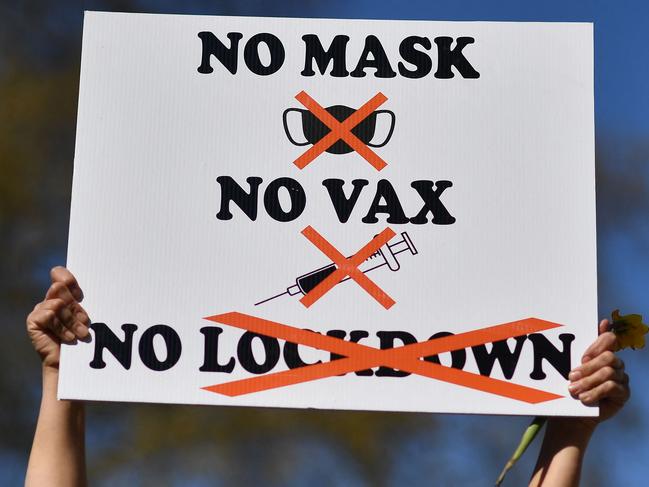
The few countries that have rolled out a vaccine quickly have seen cases and deaths fall, and in some cases a return to normal life.
British pubs have reopened their beer gardens, Israel dropped mask wearing outdoors, and theme parks and theatres have restarted in the United States.
But it has been far from plain sailing. The scramble for vaccines has seen ugly political spats, with China and Russia accused of “vaccine diplomacy” by offering homemade jabs to strategic allies.
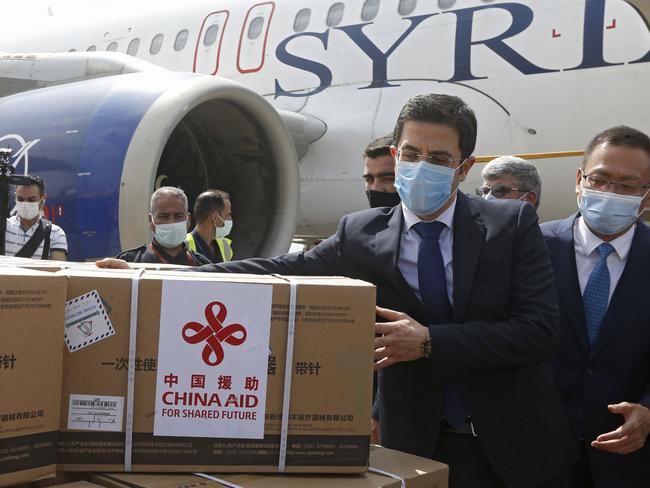
Britain and the EU became embroiled in a post-Brexit row over access to vaccines and the bloc came under fire for a shambolic start to the vaccine rollout.
And with World Health Organisation officials stressing that “no one is safe until everyone is safe”, there has been outrage over the gap between the rich world and poorer countries — a “shocking and expanding disparity,” according to WHO chief Tedros Adhanom Ghebreyesus.
Around half of the doses administered so far have been in high-income countries accounting for 16 per cent of the population. The 29 lowest-income nations have received 0.1 per cent, according to an AFP count.
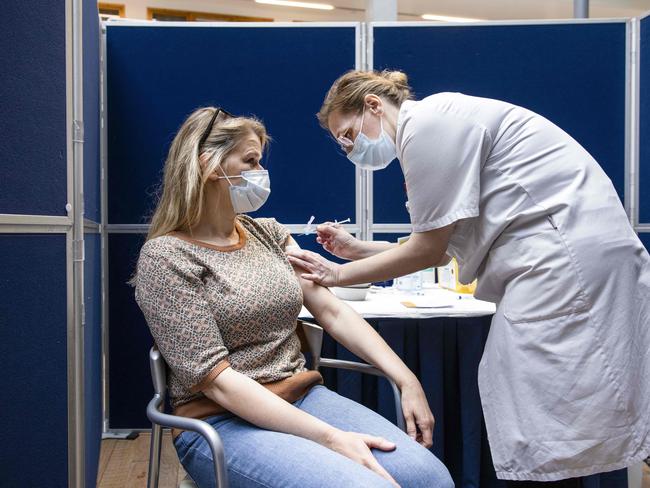
Recently, very rare but occasionally fatal side effects including blood clots have hit the headlines, afflicting particularly the vaccine produced by AstraZeneca.
Despite authorities stressing the benefits far outweigh the risks, the negative press threatens to weigh on vaccine take-up, with a flood of misinformation on social media fuelling the anti-vax drive.
In Europe, Belgium said on Saturday (local time) it would authorise the J & J shot for all adults, having already received 36,000 doses and expecting a total of 1.4 million between April and June.
Meanwhile the country became an outlier in Europe by saying it would use the AstraZeneca vaccine for people aged 41 and over “as soon as possible”, where most have restricted it to older people.
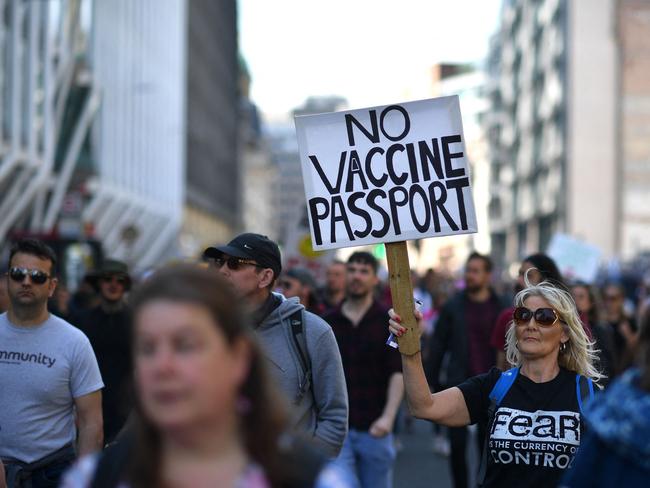
NEW ZEALAND HALTS TRAVEL TO WESTERN AUSTRALIA
New Zealand has called off travel to Perth effective immediately after West Australia announced a snap three-day lockdown.
A flight due to leave Perth for New Zealand late on Friday night was called off.
“Air New Zealand flight NZ176 from Perth to Auckland this evening has been cancelled due to the three-day lockdown in Western Australia,” an Air NZ spokesman told the NZ Herald.
New Zealand’s Minister COVID-19 Response, Chris Hipkins, said the route had been paused pending further advice from the state government.

“As set out in our trans-Tasman bubble protocols, travel between New Zealand and Western Australia has been paused, pending further advice from the state government,” a statement on the New Zealand government website said.
The decision came after Western Australia announced that the regions of Perth and Peel were entering a three-day lockdown, which started Saturday, due to a traveller testing positive for the coronavirus.
The decision to lock down followed “a positive COVID-19 case from hotel quarantine who was active in the community,” a statement on the Western Australia government website said.
Local media reported that a man in his 50s flew into Melbourne from Perth on Wednesday and tested positive for the coronavirus early yesterday.
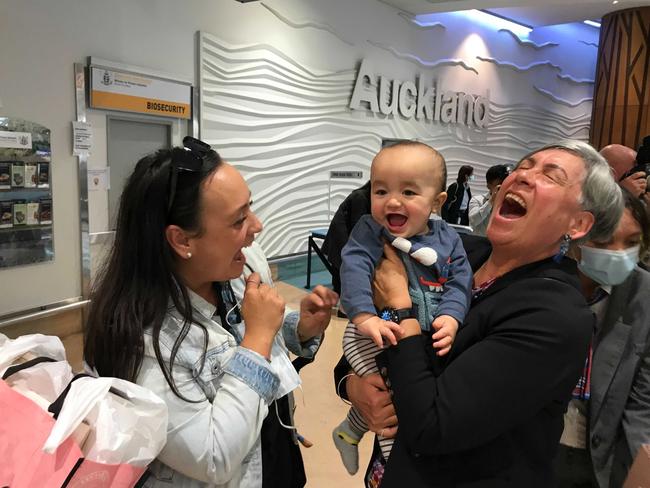
He underwent the legally-required quarantine in a Perth hotel and had gone to restaurants, a university, a public pool, a doctor’s office and a friend’s house before leaving the area.
“He spent up to five days in Perth, and we now need to assume he was infectious,” Western Australia premier Mark McGowan told a press conference.
It comes just five days after the start of quarantine-free travel between New Zealand and Australia.
UNDER FIRE EU MAKES NEW VACCINE PROMISE
The under-fire EU coronavirus vaccine program will secure enough doses to immunise 70 per cent of adults by the end of July, European Commission chief Ursula von der Leyen said on Friday (local time).
The EU chief had previously set a goal of late September, but announced the new target during a visit to a Belgian vaccine plant that is ramping up production.
“I’m confident we will have enough doses to vaccinate 70 per cent of all EU adults already in July,” Ms von der Leyen said, at a factory producing the Pfizer/BioNTech vaccine.
Ms von der Leyen said the European Union would “in the next days” conclude a new contract with the firm — already a mainstay of the European effort — for an additional 1.8 billion doses of second-generation jabs in 2022 and 2023.
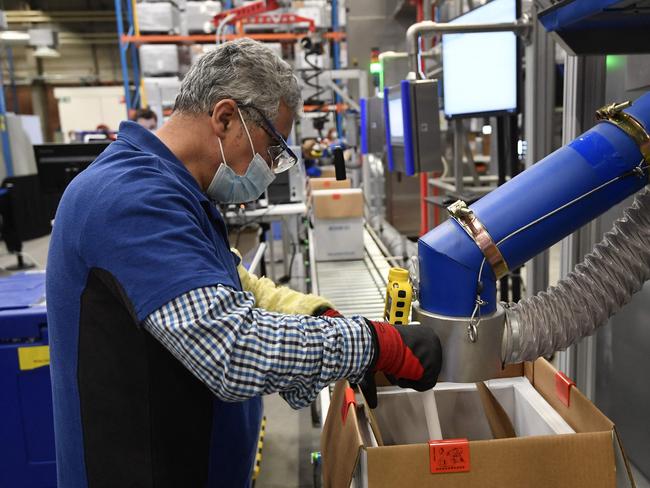
The Pfizer vaccine, developed by German partner BioNTech, is expensive compared to some competitors and uses the mRNA technique that can be adapted to future coronavirus variants.
The European Commission’s vaccine effort to jointly purchase vaccines for the 27 member states got off to a rocky start, with delivery shortfalls, particularly from UK-based AstraZeneca.
But Ms von der Leyen thanked Pfizer and its subcontractor in Puurs for its “enormous effort” in building up supply.
“So we negotiated together a second contract already early in January, and to accelerate the delivery of vaccine,” she said, at a joint news conference with Pfizer CEO Albert Bourla.
“I have outlined the challenges going from vaccinating potentially children and teenagers to having a boost to increase immunity after a certain amount of time, and mainly to prepare for … variants that might occur.
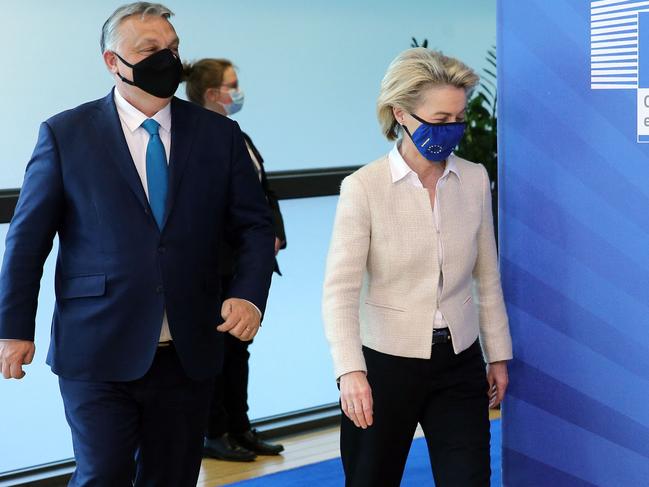
“And here the technology of mRNA is incredibly agile. So there is a limited amount of time that is needed to, if I may say so, engineer the mRNA in a way that it can adapt to potential escape vaccines.” The European Commission is drawing up plans to take legal action against another pharma giant AstraZeneca over its failure to meet vaccine delivery targets.
Ms von der Leyen did not address this, but said the question of whether drug companies had proven “reliable partners” had been taken into account in the ongoing contract negotiations.
EU CONSIDER LEGAL ACTION OVER VACCINE DELAYS
On Thursday (local time) diplomats said the European Commission was looking to launch legal action against AstraZeneca for underdelivering COVID-19 vaccine doses to the EU, hobbling the bloc’s early rollout of jabs.
The EU executive informed member state envoys of its plans on Wednesday (local time), the diplomats told AFP, confirming information first published by the Politico website.
They said any lawsuit against AstraZeneca would begin in a Belgian court — the jurisdiction agreed under the commission’s contract with the British-Swedish pharmaceutical company.
A Commission spokesman, Eric Mamer, told journalists that “no decision has yet been taken”.
Another spokesman, Stefan De Keersmaecker, added: “As you know, AstraZeneca is not delivering the number of doses which have been agreed upon in the contract … This is one of the reasons why we keep our options open together with member states to take any further steps.”

One EU diplomat said the commission wants EU member states — which also had a role in negotiating the vaccine contracts for the bloc — to back the lawsuit and to say so by the end of this week.
“The problem is that the member states do not know the complaint” being formulated, the diplomat said. “It is a sensitive procedure and you do not want to further damage trust in the vaccine.” Another diplomat said that “not all member states are in agreement” on taking the company to court, stressing that their aim was simply to have AstraZeneca deliver the doses it had promised in its contract.
AstraZeneca has so far delivered just 31 million of the 120 million doses it had promised. It has warned it will likewise provide just 70 million of the 180 million more meant to be delivered over the rest of this year.
Public confidence in the AstraZeneca jab has taken a blow after the European Medicines Agency, the bloc’s regulator, said it was likely linked to a very rare, but often fatal, form of blood clot affecting the brain.
The EMA and the commission have not changed their stance on a general use of AstraZeneca, saying its benefits outweigh the risks, but several EU countries have restricted its use to older citizens, aged over 50, 55 or 60.
The EU, however, is now increasingly relying on the BioNTech/Pfizer vaccine for its rollout, which has been accelerating since the end of March.
De Keersmaecker said that the commission opted to let lapse a deadline to activate an option for 100 million extra AstraZeneca doses.
“This option will not be exercised,” he said.
AstraZeneca’s French-Australian boss, Pascal Soriot, has argued that his company’s contract with the EU binds it only to a “best reasonable efforts” clause.
But the commission says the rest of the contract shows greater legal responsibility than that, and EU diplomats and politicians have pointed out that the company has largely delivered promised doses to Britain, where it is headquartered.
A Brussels lawyer who has studied the AstraZeneca contract, Arnaud Jansen of the firm De Bandt, told AFP that, if any legal action were to go ahead, “it’s a process that could take months” before a court rules on it.
WHO WANTS MORE ASTRAZENECA CLOT DATA FROM OUTSIDE EUROPE
The World Health Organisation’s vaccine advisers have called for more data on the incidence of blood clots in people who received the AstraZeneca COVID-19 vaccine outside Europe.
The WHO’s Strategic Advisory Group of Experts (SAGE) on Immunisation updated their guidance on the use of AstraZeneca’s coronavirus jab, rewriting the section on precautions in light of data from Europe on clotting.
“WHO continues to support the conclusion that the benefits of these vaccines outweigh the risks,” the UN agency stressed in a statement.
On April 7, SAGE said a link between AstraZeneca’s COVID-19 jabs and blood clots was plausible but unconfirmed, underlining that reported occurrences were “very rare”.
In light of evidence emerging from ongoing vaccination programs, they have updated their recommendations on the AstraZeneca jab, which is being deployed in 157 territories according to an AFP count.
SAGE said most clotting cases were reported in Britain and the European Union, with very few cases noted in other countries.
They said it was unknown whether there was a risk of clotting from the second dose of the vaccine, while recommending that those who suffered blood clots after their first injection should not be given the second dose of the two-shot vaccine.
“A very rare syndrome of blood clotting combined with low platelet counts, described as thrombosis with thrombocytopenia syndrome (TTS), has been reported around four to 20 days following vaccination,” the new guidance says.
“A causal relationship between the vaccine and TTS is considered plausible although the biological mechanism for this syndrome is still being investigated.
“Most of these cases were reported from the UK and the EU. There is considerable geographic variation with regards to the reported incidence, with very few cases reported from non-European countries, despite extensive use of the vaccine.
“An estimation of the risk outside Europe needs further data collection and analysis.”
The SAGE guidance said that data from Britain, dated March 31, suggested the risk of TTS was approximately one case per 250,000 vaccinated adults, while the rate in the EU was estimated at one in 100,000.
It said current data from Europe suggested that the risk might be higher in younger adults compared with older adults.
“No specific risk factors have yet been identified,” it said.
While stressing that the benefit of vaccination against COVID-19 “far outweighs” the risks, the assessment may differ between countries.
“Countries should consider their epidemiological situation, individual and population-level risks, availability of other vaccines, and alternate options for risk mitigation,” the guidance said.
“The benefit-risk ratio is greatest in older age groups.
“It is currently unknown whether there is a risk of TTS following the second dose.” The safety surveillance and monitoring section was also rewritten, recommending research into serious adverse events including cerebral venous sinus thrombosis and thrombotic events with thrombocytopenia.
It also called for research into the incidence of TTS by region, age and sex.
More Coverage
Originally published as Coronavirus: Perth cluster spreads to New Zealand



